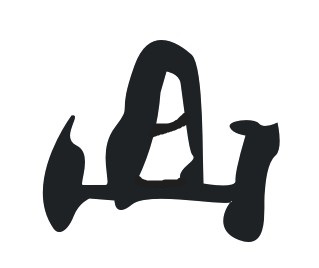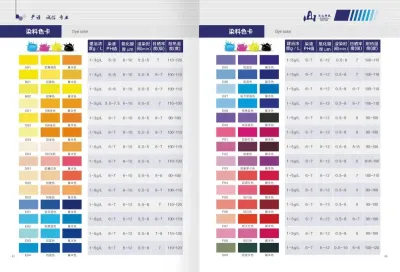
What chemical additives are used for polishing?
2024-07-15 15:30
In modern manufacturing, polishing processes are widely used in surface treatment of metals, glass, ceramics and other materials. Through the use of chemical additives, the gloss and surface smoothness of products can be significantly improved.
Polishing is not only for aesthetics, but also improves the corrosion resistance and service life of the material. So, which chemical additive should be chosen during the polishing process? This article will delve into this issue and analyze the characteristics and functions of various chemical additives.

What is the polishing process?
Polishing is a process that uses mechanical and chemical means to make the surface of a material smooth and flat. In the polishing process, chemical additives play a key role. These additives accelerate the removal process of the material surface, reduce mechanical friction, and ultimately achieve the desired surface finish.
What are the types of chemical polishing additives?
There are many types of chemical polishing additives, each with its own unique advantages and scope of application. Common polishing chemical additives include ammonium nitrate, oxalic acid, sodium hydroxide, aluminum potassium sulfate, and nitric acid. The following are the functions of these polishing chemical additives:
1. Ammonium Nitrate:
Ammonium nitrate is a commonly used polishing additive, mainly used for metal polishing, especially soft metals such as aluminum and copper. Ammonium nitrate can effectively remove the oxide layer and surface particles during the polishing process, forming a smooth surface. In addition, ammonium nitrate has low toxicity and high stability, making it suitable for a variety of industrial applications.
2. Oxalic Acid:
Oxalic acid is an organic acid widely used in metal and stone polishing. Oxalic acid can react with oxides on the metal surface to form soluble oxalates, thereby removing the oxide layer and dirt on the surface. The surface gloss after oxalic acid polishing is high and suitable for the processing of high-end decorative materials.
3. Sodium Hydroxide:
Sodium hydroxide is a strongly alkaline chemical commonly used for cleaning and polishing metal surfaces. Sodium hydroxide can dissolve oxides and oil on the metal surface, making the surface smooth and clean. Although sodium hydroxide is highly corrosive, the polishing effect can be effectively achieved by controlling the concentration and usage time.
4. Aluminum Potassium Sulfate:
Potassium aluminum sulfate, commonly known as alum, is a chemical additive commonly used in glass and ceramic polishing. Potassium aluminum sulfate can generate fine abrasive particles during the polishing process, helping to remove surface particles and improve surface finish. Alum also has a certain corrosion inhibition effect and can protect materials from excessive corrosion during the polishing process.
5. Nitric Acid:
Nitric acid is a strongly acidic chemical commonly used to polish hard metals such as stainless steel. Nitric acid can quickly dissolve the oxide layer and impurities on the metal surface to form a shiny surface. However, the highly corrosive and toxic nature of nitric acid requires strict safety handling measures.

How do chemical additives work?
Polishing chemical additives combine chemical reactions and mechanical effects to remove particles and oxide layers on the surface of the material, thereby achieving a polishing effect. The specific working principle is as follows:
1. Chemical dissolution:
Chemical additives react with oxides and impurities on the surface of the material to produce compounds that are soluble or easily removed. For example, oxalic acid reacts with metal oxides to form soluble oxalates, thereby removing the oxide layer on the surface.
2. Mechanical grinding:
Certain chemical additives can generate fine abrasive particles in the solution. These abrasive particles can micro-grind the material surface under the action of mechanical force, removing particles and uneven parts. Potassium aluminum sulfate is commonly used for this purpose in glass and ceramic polishing.
3. Corrosion protection:
Some chemical additives have a corrosion-inhibiting effect during the polishing process and can form a protective layer on the surface of the material to prevent excessive corrosion. For example, alum not only generates abrasive particles in glass and ceramic polishing, but also forms a corrosion-inhibiting protective layer on the surface.

Environmental protection and safety issues
When using chemical additives for polishing, environmental and safety issues cannot be ignored. Many traditional polishing additives, such as nitric acid and sodium hydroxide, are highly corrosive and toxic, requiring strict safety operations and waste disposal. As environmental regulations become increasingly stringent, companies need to find more environmentally friendly alternatives to reduce their impact on the environment.
In recent years, some companies and scientific research institutions have been committed to developing more environmentally friendly and safer polishing additives. For example, some biodegradable organic acids and low-toxicity inorganic salt additives are gradually being used in industrial production, which can not only meet polishing needs, but also reduce environmental and safety risks.
In summary, which chemical additive to use for polishing needs to be selected based on specific material and process requirements. Common polishing additives such as ammonium nitrate, oxalic acid, sodium hydroxide, potassium aluminum sulfate and nitric acid each have their own unique advantages and scope of application.
Through scientific selection and rational application of these additives, companies can significantly improve product quality and production efficiency.








